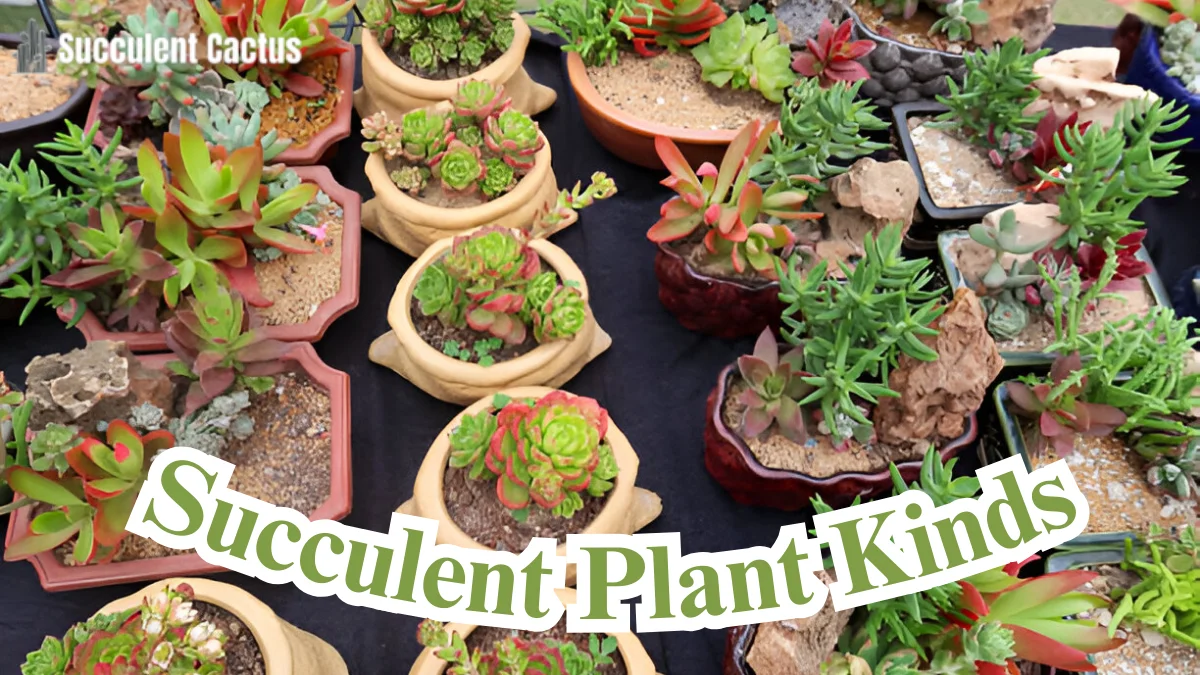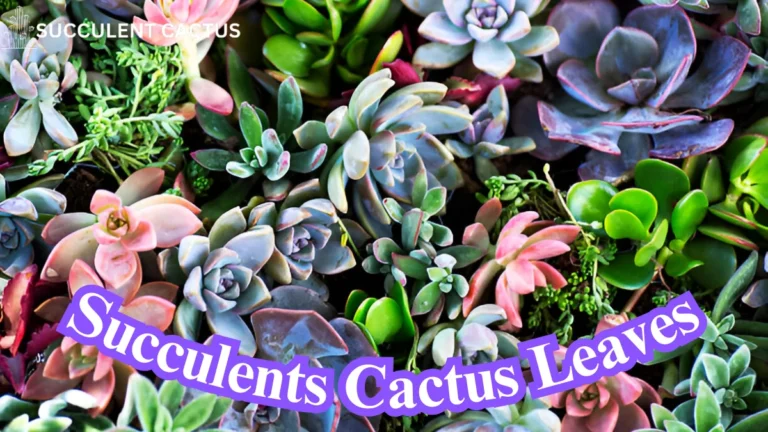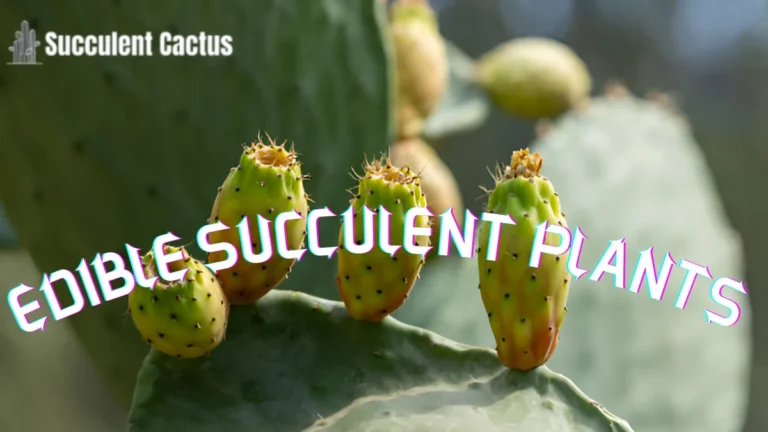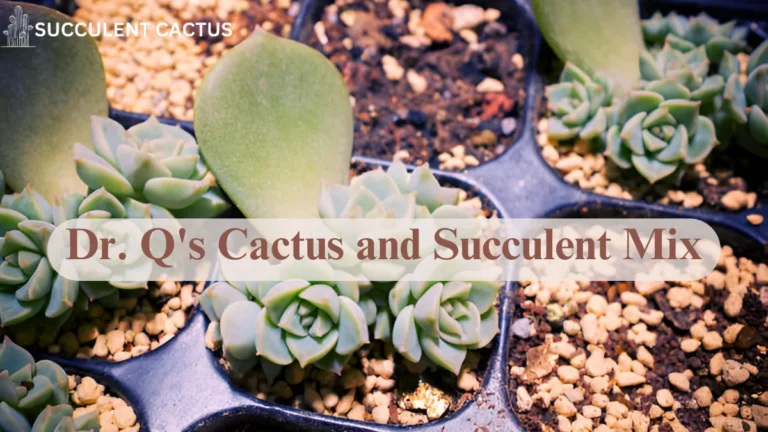Succulent Plant Kinds and Indoor Succulent Types: The Ultimate Guide

Succulent plant cacti are some of the most popular plants for indoor spaces due to their low maintenance, vibrant colors, and unique textures. This comprehensive guide will provide you with everything you need to know about succulent plant kinds, types, care, and how to incorporate them into your home. Whether you’re a seasoned succulent enthusiast or a beginner, you’ll find valuable information that will help your succulents thrive in your indoor environment.
1. Understanding Succulent Cactus
What Makes Succulent Cacti Unique?
Succulent plant cacti belong to the Cactaceae family and are known for their fleshy, water-storing stems. These plants are adapted to arid climates, thriving in dry conditions and requiring minimal watering. Their thick stems, spines, and waxy coatings protect them from dehydration, making them well-suited for both indoor and outdoor cultivation.
- Water Retention: Succulent plant cacti store water in their stems, allowing them to survive in dry conditions for extended periods.
- Spines and Thorns: Instead of leaves, many cacti have spines or thorns, which help reduce water loss and protect them from herbivores.
- Variety: The cactus family is incredibly diverse, ranging from small, spherical plants to tall, tree-like varieties.
Key Characteristics of Succulent Cacti
Understanding the essential features of succulent plant cacti will help you care for them more effectively. These plants are particularly known for their ability to survive harsh environments, and their resilience to both high heat and drought makes them excellent choices for indoor gardening.
- Root System: Succulent cacti have shallow root systems that spread out to capture water from rainfall quickly.
- Growth Patterns: These plants may grow slowly, but they can live for many years and continue to bloom when cared for properly.
- Adaptability: While they’re native to arid regions, many succulent cacti adapt well to indoor conditions, particularly when placed in well-lit areas.
Common Misconceptions About Succulent Cacti
While succulent plants are tough plants, they do require specific care to thrive. Some common misconceptions about these plants include:
- “Cacti don’t need water at all.” While cacti are drought-tolerant, they still need occasional watering.
- “Cacti can grow in any light.” Cacti require bright light, and some varieties can suffer in low-light conditions.
- “Cacti are hard to care for.” When given proper attention, cacti are easy to care for and can live for many years indoors.
2. Types of Succulent Cacti
Prickly Pear Cactus (Opuntia)
The prickly pear cactus is one of the most recognizable types of succulent cactus. It has broad, flat pads covered in spines and produces bright flowers and edible fruit, known as “tunas.”
- Size: Can grow up to 6 feet tall indoors with proper care.
- Flowers: Produces vibrant yellow, pink, or red flowers in the summer.
- Care: Thrives in direct sunlight and well-draining soil.
Barrel Cactus (Ferocactus)
Barrel cacti are popular for their striking cylindrical shape and prominent spines. They often have a yellow or orange hue and can live for many years with minimal care.
- Size: Can reach 3 to 4 feet in height indoors.
- Flowers: Barrel cacti bloom bright yellow flowers in the summer.
- Care: Require bright, indirect sunlight and a dry environment.
Christmas Cactus (Schlumbergera)
Unlike many cacti, the Christmas cactus doesn’t have spines. It’s known for its festive, bright-colored flowers that bloom during the holiday season, making it a popular choice for indoor decor.
- Size: Typically 12-18 inches in height indoors.
- Flowers: White, pink, red, or purple blooms in winter.
- Care: Prefers indirect light and humidity. Water regularly but allow the soil to dry out between waterings.
3. Indoor Succulent Cactus Care Essentials
Light Requirements for Indoor Succulent Cacti
Succulent plant cacti thrive in bright, indirect sunlight, but some species can tolerate direct sun for short periods. Proper lighting is critical for their health, as insufficient light can lead to weak growth and poor flowering.
| Cactus Type | Light Requirement | Sun Exposure |
| Prickly Pear Cactus | Bright, indirect | Full sun (outdoors) |
| Barrel Cactus | Bright, indirect | Tolerates partial sun |
| Christmas Cactus | Indirect light | Low light tolerance |
Watering Guidelines
Watering your succulent cactus properly is crucial. Overwatering is one of the most common causes of death for succulents, so it’s important to let the soil dry out completely before watering.
- Frequency: Water once every 2-3 weeks during the growing season (spring and summer) and reduce watering during dormancy (fall and winter).
- Watering Method: Use the “soak and dry” method, ensuring the water drains thoroughly. Never let your cactus sit in standing water.
Ideal Soil for Succulent Cacti
Cactus and succulent plant soil needs to be fast-draining to prevent root rot. A mixture designed specifically for cacti is often the best option, but you can create your own by combining potting soil, sand, and perlite.
- Cactus Mix: Commercial cactus mix is typically well-draining and has the right texture for most cactus types.
- Homemade Mix: Mix 3 parts cactus soil, 1 part perlite, and 1 part coarse sand to ensure proper drainage.
4. Common Problems with Indoor Succulent Cacti
Overwatering and Root Rot
Overwatering is a common issue for succulent plant. When water sits in the pot for too long, it causes the roots to rot, leading to a decline in plant health.
- Signs: Yellowing leaves, mushy stems, and a foul odor are signs of root rot.
- Solution: Ensure your cactus pot has proper drainage. If root rot occurs, trim the affected roots and repot the cactus into fresh, dry soil.
Pest Infestation
Although succulent plants are fairly pest-resistant, they can still fall victim to common houseplant pests like aphids, mealybugs, and spider mites.
- Signs: Tiny white spots, webbing, or sticky residue on the plant.
- Solution: Treat with neem oil or insecticidal soap. You can also rinse your cactus with a gentle stream of water to remove pests.
Leggy Growth
When succulent plants don’t get enough light, they may grow long and leggy, with spaces between leaves and stems.
- Cause: Insufficient light or too much watering.
- Solution: Move your cactus to a sunnier location and ensure you’re not overwatering it.
5. Choosing the Right Pot for Succulent Cacti
Pot Size and Drainage
Succulent plant prefer small to medium pots with good drainage to allow excess water to escape and prevent root rot.
- Drainage Holes: Ensure the pot has drainage holes to avoid waterlogging.
- Size: Choose a pot that’s just slightly larger than the cactus’s root ball to encourage healthy growth.
Pot Materials
Terracotta pots are a popular choice for succulents because they are porous and allow for better airflow to the roots. However, plastic and ceramic pots are also viable options.
- Terracotta Pots: Excellent for succulents due to their breathability and weight.
- Plastic Pots: Lightweight and affordable, but they may not dry out as quickly as terracotta.
Self-Watering Pots
Self-watering pots are designed to deliver a consistent amount of moisture to the plant. While useful for some plants, succulent cacti prefer dry soil, so it’s best to avoid these for cactus care.
- Recommendation: Use self-watering pots only for plants that require more consistent moisture, like tropical houseplants.
6. Creative Ways to Display Succulent Cacti
Succulent Arrangements
Create a beautiful succulent arrangement using different cactus varieties, such as combining the barrel cactus with the prickly pear cactus for variety.
- Container Ideas: Use a shallow wooden box or a glass terrarium for the arrangement.
- Design Tips: Mix plants of different heights and textures to create a visually appealing display.
Hanging Planters
Hanging planters are a stylish way to display your succulent cacti, especially in smaller spaces.
- How to Hang: Use macramé plant hangers or hanging baskets to suspend your succulents from the ceiling.
- Best Plants: Smaller cactus varieties like the Christmas cactus are perfect for hanging planters.
Vertical Gardens
For those with limited space, vertical gardens are an excellent option for displaying succulent cacti.
- Setup: Mount succulent cacti in a vertical garden frame or use a multi-tiered shelf system.
- Benefits: Vertical gardens save space while creating a visually stunning display.
7. Best Succulent Varieties for Indoor Spaces
Echeveria
Echeveria is one of the most popular succulents for indoor spaces due to its stunning rosettes and vibrant colors. It thrives in bright light and is relatively easy to care for.
- Care: Needs well-draining soil and moderate watering.
- Appearance: Forms rosettes in shades of green, red, or purple.
Aloe Vera
Aloe vera is not only a beautiful succulent but also a plant with medicinal uses. Its gel is known for its soothing properties, especially for burns and skin irritations.
- Care: Requires bright, indirect light and little watering.
- Appearance: Green to bluish-gray with thick, fleshy leaves.
Haworthia
Haworthia is another great option for indoor succulent gardening. Known for its small size and architectural form, this succulent is perfect for smaller spaces.
- Care: Thrives in low to medium light conditions and requires minimal watering.
- Appearance: Short, rosette-shaped leaves that are green or striped with white.
8. How to Propagate Succulent Cacti
Leaf Cuttings
Some succulents, like Echeveria, can be propagated using leaf cuttings. Simply remove a healthy leaf, let it dry out for a few days, and then plant it in well-draining soil.
- Steps: Cut a leaf near the base, allow it to callous, and then place it in soil. Water sparingly until roots form.
Offsets
Many succulent cacti, like the prickly pear, produce offsets or “pups” that can be separated and planted in their pots.
- Steps: Gently remove the pups from the parent plant, let them dry for a day, and then plant them in their pots.
Seed Propagation
While slower than other methods, propagating succulent cacti from seeds can be a rewarding process. It requires patience and precise conditions.
- Steps: Plant seeds in a sterile, well-draining soil mix and keep the seeds moist until germination occurs.
9. Common Mistakes to Avoid When Caring for Succulent Cacti
Overwatering Your Cactus
One of the most common mistakes in succulent cactus care is overwatering. While cacti are drought-tolerant, they do require occasional watering. Overwatering can lead to root rot, which can be fatal to your plant.
- How to Avoid: Make sure your pot has drainage holes to prevent water from collecting at the bottom. Only water when the soil is completely dry to the touch. During the winter months, reduce watering significantly.
- Signs of Overwatering: Yellowing stems, wilting, and soft or mushy patches on the plant indicate that your cactus is suffering from overwatering.
- Solution: If root rot occurs, gently remove the cactus from its pot, cut away any damaged roots, and repot it into fresh, dry soil. Allow the cactus to dry out for a few days before watering again.
Ignoring Temperature and Humidity
Cacti thrive in dry, hot environments, but many indoor gardeners overlook temperature and humidity conditions, which can affect plant health.
- Ideal Temperature: Succulent cacti prefer warm temperatures, typically between 60°F to 100°F (15°C to 38°C). Avoid placing them near cold drafts or in areas where temperatures fluctuate too much.
- Humidity: Cacti do best in low-humidity environments. Avoid placing them in areas with high humidity, like bathrooms, as this can lead to fungal infections and rot.
- How to Avoid: Place your cacti near windows that receive plenty of sunlight and keep them in areas with stable temperatures and low humidity.
Choosing the Wrong Pot
Choosing the wrong pot can hinder your cactus’s growth. Pots without drainage holes, or those that are too large, can lead to poor root development and excess moisture retention.
- Correct Pot Size: Choose a pot that is just slightly larger than the cactus’s root ball. A pot that is too large may hold excess moisture and cause the roots to rot.
- Drainage: Ensure the pot has sufficient drainage holes. This allows water to flow out, preventing stagnant moisture at the bottom.
- Material: Terracotta pots are an excellent choice because they allow the soil to dry out faster, keeping the roots from sitting in moisture. Avoid plastic pots for cacti, as they can trap moisture and increase the risk of rot.
10. Seasonal Care for Succulent Cacti
Caring for Succulents in the Summer
During the summer months, your succulent cactus will likely experience a growth spurt due to increased sunlight and warmer temperatures.
- Watering: Increase watering during the summer months, but always ensure the soil is dry before watering again. Water deeply, but allow the water to drain completely.
- Sunlight: Succulent cacti love full sun, so ensure your plant is placed in a location that gets at least 4-6 hours of direct sunlight each day. However, be mindful not to overexpose them to scorching heat, as it could cause sunburn.
- Fertilizing: Summer is also the time to fertilize your cactus. Use a balanced cactus fertilizer once every 4-6 weeks to encourage healthy growth.
Caring for Succulents in the Winter
Winter is a dormant period for most succulent cacti. During this time, their growth slows down significantly, and they need less water and fertilizer.
- Watering: Reduce watering in the winter months. You may only need to water your cactus once every 4-6 weeks, depending on the indoor conditions. Always make sure the soil is dry before watering.
- Temperature: Keep your cactus in a warm environment, ideally between 50°F to 70°F (10°C to 21°C). Avoid placing them near cold windows or drafts, as they can be sensitive to temperature fluctuations.
- Lighting: If sunlight is limited during winter, consider moving your cactus to a brighter spot or using a grow light to ensure it receives adequate light during the shorter days.
Preparing for Spring Growth
Spring is the perfect time to start preparing your succulent cactus for a growth spurt. As temperatures rise and days lengthen, your cactus will begin its active growing season.
- Repotting: If your cactus has outgrown its pot or the soil has become compacted, spring is a great time to repot it into fresh, well-draining cactus soil. Choose a pot that’s slightly larger than its root ball to accommodate growth.
- Pruning: Trim away any dead or damaged stems or pads to encourage new growth and improve the overall health of your cactus. Be sure to use sharp, clean scissors or pruning shears.
- Fertilizing: Reintroduce regular feeding in spring. Apply a balanced cactus fertilizer to promote new growth. Fertilize once every 4-6 weeks during the growing season.
11. Unique Uses of Succulent Cacti in Your Home
Natural Air Purifiers
Succulent cacti are more than just ornamental plants; they also serve as natural air purifiers. Certain cacti species, such as Aloe Vera, help filter out toxins from the air and improve indoor air quality.
- How They Work: Cacti absorb carbon dioxide and release oxygen, helping to reduce indoor air pollution. Aloe Vera, for example, is known to filter formaldehyde and benzene, common indoor pollutants.
- Indoor Benefits: Having succulent cacti in your home can create a cleaner, healthier environment by purifying the air, making it particularly beneficial for people with allergies or respiratory conditions.
Decorative Elements in Your Home
Succulent cacti add a unique and natural touch to any interior design style. Whether you prefer minimalist decor, rustic vibes, or vibrant color schemes, cacti are versatile and can complement various home aesthetics.
- Modern Aesthetic: Use small potted cacti on shelves or as centerpieces to add texture and interest to your living spaces.
- Boho Style: Pair cacti with macramé hangers or place them in ceramic pots for a laid-back, bohemian vibe.
- Desk Decor: A small cactus on your desk can bring a touch of nature to your workspace, providing a calm and inspiring environment.
Cactus for Low-Maintenance Gardening
For those who want to bring nature indoors but lack a green thumb, succulent cacti are the perfect solution. Their low-maintenance requirements make them ideal for people with busy lifestyles or for beginners looking to try gardening.
- Easy Care: With minimal watering and a preference for bright light, cacti are perfect for homes or offices with limited time for plant care.
- Resilience: Cacti are tough plants that can survive periods of neglect, making them an excellent choice for people who may forget to water their plants occasionally.
- Long-Lasting: Once established, cacti can live for many years with the right care, providing long-term beauty without constant upkeep.
12. The Environmental Benefits of Succulent Cacti
Water Conservation
Succulent cacti are excellent for water conservation, making them an ideal choice for sustainable gardening practices. These plants are adapted to survive with minimal water and can thrive in environments with little rainfall.
- Efficient Water Use: Succulent cacti store water in their thick stems, allowing them to go without rain for long periods. This makes them ideal for xeriscaping and water-conscious gardens.
- Minimal Maintenance: As cacti need less water than many other plants, they are perfect for reducing the amount of water required for plant care in dry climates.
Biodiversity and Habitat Conservation
Many succulent cacti species are native to desert regions and play important roles in maintaining the biodiversity of their ecosystems.
- Supporting Local Wildlife: Succulent cacti provide shelter and food for various animals, including birds, insects, and small mammals.
- Conservation Efforts: Some species of succulent cacti, such as the endangered Saguaro cactus, are being protected through conservation programs to preserve their natural habitats and biodiversity.
Promoting Eco-Friendly Gardening
Succulent cacti contribute to eco-friendly gardening by reducing water usage and providing a habitat for beneficial wildlife. By growing these plants in your home or garden, you contribute to sustainability and environmental conservation.
- Sustainable Gardening: Incorporating cacti into your garden promotes sustainable gardening practices that reduce water consumption and promote biodiversity.
- Eco-Conscious Decor: Choosing succulent cacti as indoor plants is an environmentally friendly way to decorate your home while promoting water conservation.
FAQs
Q1. How often should I water my indoor succulent cactus?
Ans: Water your succulent cactus every 2-3 weeks during the growing season. Always allow the soil to dry out completely before watering again to prevent overwatering.
Q2. What’s the best lighting for succulent cacti?
Ans: Succulent cacti need bright, indirect light. Some varieties can tolerate direct sunlight, but be cautious as too much sun can lead to sunburn.
Q3. How do I prevent pests on my succulent cactus?
Ans: Use neem oil or insecticidal soap to treat pests. Regularly inspect your cacti for pests like aphids, mealybugs, or spider mites.
Q4. What type of soil is best for succulent cacti?
Ans: A well-draining cactus soil mix is ideal for succulent cacti. You can also create your mix with potting soil, perlite, and sand.
Q5. Can I propagate succulent cacti indoors?
Ans: Yes, succulent cacti can be propagated indoors through leaf cuttings, offsets, or seed propagation, depending on the species.
Conclusion
Succulent cacti are a versatile and low-maintenance option for anyone looking to brighten their indoor space. You can ensure your plants thrive by understanding their care requirements, light needs, and common issues. Whether you’re looking for a small desk plant or a dramatic centerpiece, a succulent cactus variety fits your needs.






